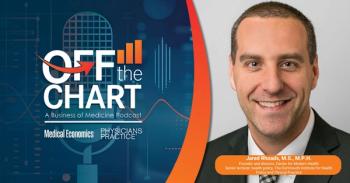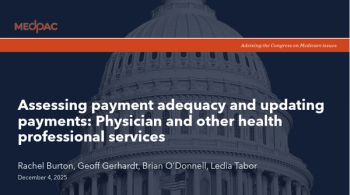
From volume to value: Primary care delivers
There are numerous models for primary care delivery successfully saving money while also improving patient outcomes.
Editor's Note:
Innovative payment models are changing the way healthcare is paid for and delivered in the United States-for the better. The transition to a value-based healthcare system, one where physicians, other health professionals, and health systems are rewarded for high-quality services that improve patient outcomes, is underway. Evidence shows that primary care can help us live longer, healthier lives and can save our healthcare system
Now is the time to examine the many successful models for primary care delivery that save money as they improve patient outcomes and determine how we can accelerate these programs to reach even more patients. These include both pilot projects that should be expanded, as well as long-standing programs that strengthen the foundation of America’s healthcare system.
Home-Based Primary Care and Medical Homes Deliver on the Triple Aim
One example of a successful model for primary care is the CMS Innovation Center’s
Advanced Primary Care Medical Homes, which focus on care coordination and team-based practice,
Initiatives like the Centers for Medicare and Medicaid Services’ Comprehensive Primary Care Plus (CPC+) program, a five-year, multi-payer program, are expanding the medical home model across the country by encouraging team-based approaches to caring for patients.
The Independence at Home and CPC+ programs are just two examples of innovative payment models that not only reward quality but offer real benefits for patients. These initiatives reiterate the value of primary care and its ability to improve the overall quality of care and life for patients served while reducing costs. As we look to pay for value and outcomes rather than volume, we need to make programs like these available to practices across the country.
Continued Success from Community Health Centers and Workforce Programs
Together with these programs, we should also look to expand and sustain long-standing initiatives that have consistently delivered primary care to communities that face high rates of costly chronic disease and lack access to the same broad range of physicians and hospitals enjoyed elsewhere.
For 50 years, community health centers (CHCs) have delivered
While the latest federal spending bill provides two years of health center funding, CHCs face an uncertain future if so-called “
Similarly, if we want to ensure primary care is an increasingly attractive career path to students-and incentivize them to practice in these underserved rural and urban communities-we have to invest in training more primary care professionals. Fortunately, we already know how.
The National Health Service Corps (NHSC) provides scholarships and loan forgiveness to nearly 10,500 primary care, dental, mental, and behavioral health practitioners serving in rural, urban and frontier communities. The
From these programs, we have learned that when physicians, nurses and others are trained in a community, they stay in these communities, filling crucial gaps in our primary care workforce. Working together, Congress and the administration should increase the federal commitment to the NHSC and Teaching Health Center programs as well as support other successful primary care workforce initiatives.
Together, we can accelerate existing models and programs that make primary care accessible to all while innovating a new generation of advanced payment models that reduce costs and improve outcomes.
Glen R. Stream is a family physician in La Quinta, Calif., and president of Family Medicine for America’s Health, which sponsors the
Newsletter
Stay informed and empowered with Medical Economics enewsletter, delivering expert insights, financial strategies, practice management tips and technology trends — tailored for today’s physicians.














